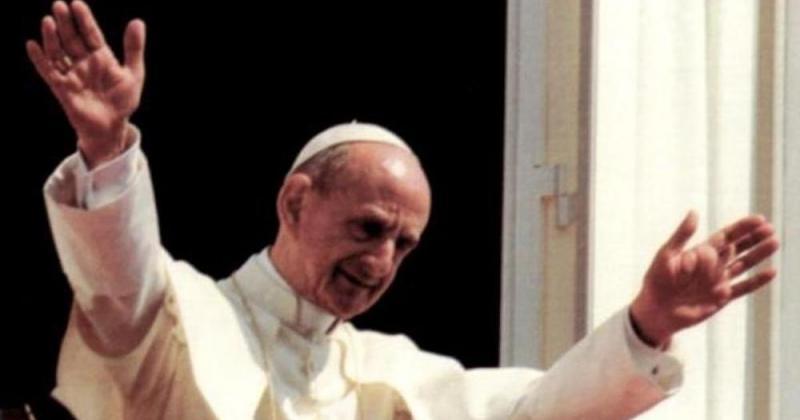Recalling an extraordinary gesture of Pope Montini while waiting for Francis’ Pilgrimage to the African country.
The Orthodox Coptic Cathedral of St. Mark’s located in the Abbasyia district in Cairo (and therefore also known as the Cathedral of Abbassia or Abbasyia), is the seat of the Coptic Orthodox patriarch pope Tawadros II. The church is dedicated to St. Mark the Evangelist, regarded and revered as the founder of the Coptic Church. Some of his relics are kept inside the temple. In June 1968, Pope Paul VI had part of the Evangelist’s relics return to Egypt’s Orthodox Copts following a request by Patriarch Cyril VI on the celebrations of St. Mark’s one-thousand-nine-hundred martyrdom anniversary. The saint’s relics were stolen and brought to Venice in 828. The parts returned by Papa Montini were “laid with great devotion” in an altar built for the occasion and are still located there. In the temple, also the relics of St. Athanasius, patriarch of Alexandria, are revered.
The popes of Rome and the Coptic popes
By now, the relations between Catholics and Copts have begun to grow in depth and frequency; this is a factor to be taken into great consideration when “reading” Francis’ upcoming trip to Egypt, where he will meet for the second time his brother Tawadros II.
The first meeting between a pope and an Orthodox Coptic patriarch of Egypt dates back to May 10, 1973. On that occasion, at the Vatican, Pope Paul VI and Pope Shenouda III signed an important common Christological “Declaration” and gave start to the bilateral ecumenical dialogue between the two Churches. The statement began by saying that the Church of Rome and the Church of Alexandria share the same faith in Jesus Christ, “perfect God with respect to His divinity, perfect man with respect to His humanity.”
The next meeting between pope Shenouda III and John Paul II, took place in Cairo in February 2000, during the Jubilee pilgrimage. The most recent meeting, forty years after the 1973 meeting, dates May 10, 2013, when Pope Francis and pope Tawadros II, both newly elected to the leadership of their churches, met in Rome.
Paul VI
Pope Paul VI, on St. Mark the Evangelist who he cherished, in the catechesis of the April 25, 1967, said, “The story of Mark (John, his Hebrew name, Mark, his Latin name; cf. Act. 12, 12) is interesting; perhaps it is interwoven with that of Jesus, in the episode of the boy who, on the night of Jesus’ arrest in the Garden, followed him – out of curiosity? Devotion? - wearing nothing but a linen cloth about his body. They seized him, but he left the cloth behind and ran off naked (Marc. 14, 52). But above all the story of Mark merges with that of the Apostles Paul and Barnabas, especially the latter whom he follows to Cyprus in the first apostolic mission (he was Barnabas’ cousin), and then, perhaps tired, perhaps frightened, once reached Perge in Pamphylia, he leaves the journey to go back alone to his mother in Jerusalem (Act. 13, 13). Paul was grieved; so much that he did not want him, three or four years later, in the second trip, even though Barnabas interceded; so sharp was their disagreement that they separated. Barnabas took Mark and sailed to Cyprus leaving Paul and Silas (Acts. 15: 37-40). Then Paul must have forgiven Mark’s infidelity in their first apostolic trip, because three times he named him lovingly in his letters (Philem. 24; Col. 4, 10; 2 Tim. 4, 11). Of the relationship between the apostles Peter and Mark, aside those mentioned, we know very little. However, we just need to adopt the same conclusion that tradition and modern studies have reached: the Gospel of St. Mark is a written reproduction of the Apostle Peter in Rome’s catechesis; it reflects, with no literary intent, but with great simplicity and vividness of detail, the stories of St. Peter’s and his memories. Its documentation is primarily, if not the only, the Apostle’s very own words, reported as a genuine report of an eyewitness, who preserves the most immediate impression of Jesus. “
Orthodox Coptic Cathedral of St. Mark
It is the largest cathedral in Africa and the Middle East. Actually, the name “San Marco” refers to a complex of religious buildings belonging to the primatial seat of the Coptic Patriarchate. Among these constructions, there is for example the small church of St. Peter and St. Paul attacked by Isis, on 11 December 2016 (Muslim holiday of Mawlid) causing 25 deaths and dozens of injuries. The inauguration of the cathedral took place June 25, 1968 in a ceremony attended by Egyptian President Gamal Abdel Nasser and the Ethiopian monarch Haile Selassie.
The land where there is the complex of San Marco, which saw over the centuries the making, destruction and renewals of buildings follow one another, were given to the Orthodox Coptic Church back in 969 by General Gawhar, conqueror of North Africa on behalf of the Fatimid dynasty and founder of the city of Cairo, as well as of the mosque university of al-Azhar. It was a compensation for land taken to build the “Palace of Ma’ad al-Muizz Li-Deenillah” a major project that was part of the urban planning of Egypt’s new capital. In the twelfth century, on that same area rose ten Coptic churches, most of which were later destroyed, during the reign of Kalavun in 1280.
Currently there are seven churches in the area including, in addition to St. Mark, Peter and Paul, the famous church Anba Rouis’ built in XIV. Its original name, St. Mourkious, changed after Anba Rouis was buried there in 1404. Every day thousands of people visit this church to ask the blessing and intercession of the saint.
